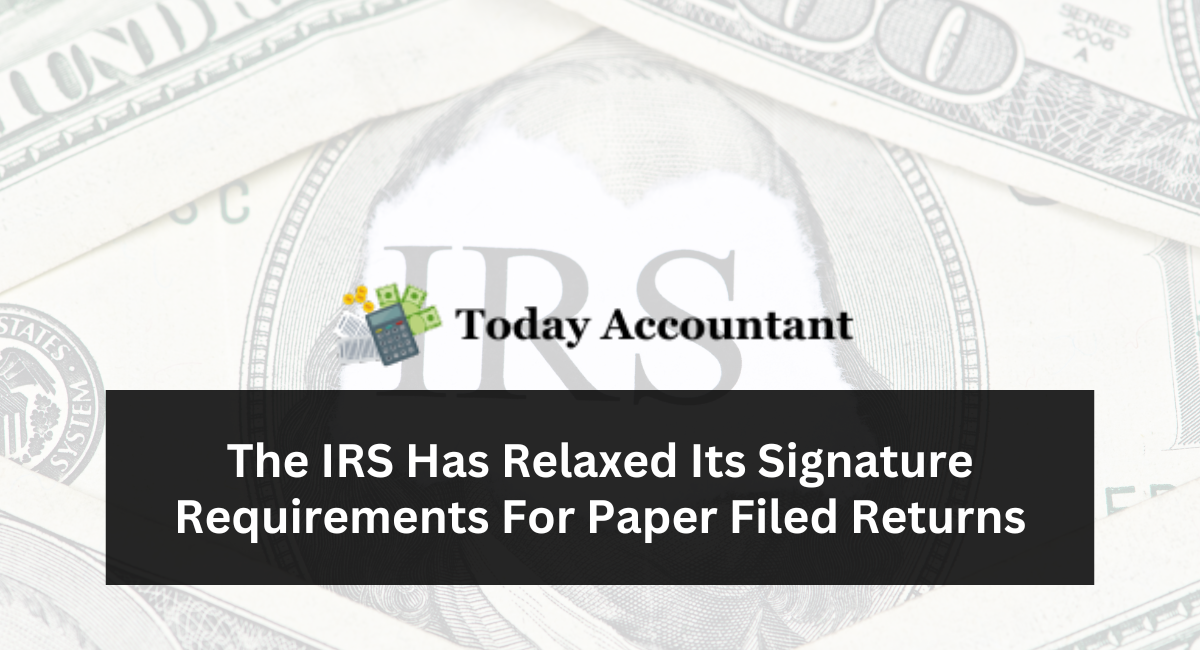Due to numerous requests from taxpayers and tax professionals alike, the IRS has begun accepting more forms that can be electronically signed. However, certain vital forms still require wet signatures.
The COVID-19 pandemic caused temporary exemptions of specific filing rules;
Form 8879
The IRS has long required ink (or “wet”) signatures on paper tax returns and documents filed with them, with limited exceptions during the COVID-19 pandemic.
Recently, however, in August 2020, they released a notice clarifying that certain returns, elections, and documents can now be signed electronically instead of with original wet signatures; this change should bring significant relief for practitioners and taxpayers alike.
Forms 8453, 8878, and 8879 can now be filed electronically using electronic signatures; these new rules only affect individual taxpayers as opposed to corporations, partnerships, or trusts. As a result, these forms will help save time when filing returns or extensions and keep both tax professionals’ and clients’ money while improving accuracy.
Before signing any document with an electronic signature, a tax professional must first use the identity verification methods outlined in Form 8879 to validate that the taxpayer is who they claim they are – this involves verifying their name and SSN as well as contact information stored. Once confirmed by the tax professional, then the taxpayer can electronically sign their form using either their PIN or digital signature.
If a taxpayer cannot physically sign the document themselves, their spouse can sign in their place under section 3 of the 8879. Additionally, the power of attorneys with verbal authorization from taxpayers can sign documents on behalf of taxpayers as long as their POA clearly authorizes this person to do so.
Even though the new e-signature rules may be helpful, tax professionals must still abide by all existing IRS filing rules when filing with them. Failure to sign documents correctly could result in severe penalties; that is why taxpayers must find a trustworthy professional when selecting one for themselves.
Drake offers an easy and efficient solution for creating and managing electronic signatures for Forms 8879 and 8878. To identify documents that have been electronically signed in Drake, select Documents Type > Signed PDF Document from the Documents Type column in Drake.
To enable alternative signature options for preparers, navigate to Setup > Options > Preparers; associate each preparer with their firm, allow PIN Signature for each preparer (8879 PIN or otherwise), and store these signatures under each taxpayer folder for each year of tax returns filed electronically in Drake.
Form 8878
Historically, the IRS has required an ink signature (so-called “wet”) on tax returns and other documents submitted for filing with them. Despite repeated pleas from tax professionals to allow electronic signatures instead, due to fears about fraud and identity protection, this requirement has not been relaxed despite repeated requests.
However, during the COVID-19 pandemic, the IRS has allowed more signature flexibility that should help alleviate some of the burden on users.
These policies included permitting paid preparers to use digital or electronic signatures instead of an original hand-written signature and permitting taxpayers to file electronically with help from paid return preparation professionals. Both taxpayers and tax professionals found these temporary policies extremely helpful, reporting that using a digital or electronic signature saved time and resources.
However, other barriers to electronic filing have proven more challenging than anticipated. For example, it remains unclear whether a faxed signature can be accepted when filing certain types of tax elections under Rev Rul 2008-18 (such as creating an S or Q Sub or structuring an F Reorgation under Rul. 2008-18).
Finally, the IRS issued guidelines allowing taxpayers to sign their Forms 8878 and 8879 using digital or electronic signatures.
The E-Signature Guidance provides specific requirements for the method and verification of signatures. These requirements include attaching or associating signatures with documents, providing means to maintain the integrity of signatures post-signature, and using an authentication system capable of authenticating signer identities.
Specifically, practitioners and taxpayers must use an authenticator like Practitioner PIN (or similar unique identifiers) when authenticating taxpayer signatures.
Taxpayers can enter their PINs themselves or have tax professionals enter them on their behalf; either way, however, the software or system must generate unique PINs for every taxpayer in order to prevent spoofing, and identity verification must occur on an ongoing basis – not as one-off events.
Conclusion
The E-Signature Rules do not currently apply to some forms that have already been optimized for electronic filing, like Forms 1040 and 1120. Furthermore, other forms that now require hand signatures, such as 2848 Power of Attorney Declaration Representative Rep and Form 8938 Foreign Financial Institution Reporting, do not need an e-signature either.
It should be noted that these temporary exceptions are expected to end by 2025, so tax professionals and taxpayers alike should continue planning accordingly for when these exemptions no longer exist.

Leave a Reply